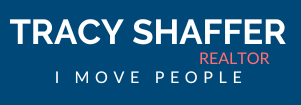I have my sons fifty weeks a year, so the time without the demands of motherhood is always at a premium. I set out to use it wisely, make a to-do list and then return from the airport run to crawl under the covers for a quick nap. The week progresses, the list morphs, and I home in on how to use my precious time. Sometimes going dancing makes the cut, sometimes it’s filing, but it is specific. When the week flew by, I scanned to see what I had accomplished in my solitude and what I learned.
The difference between busy and productive will determine your level of success and they can work together if you know how to work ‘em. As a Realtor, writer and single mother, time management skills are critical to the balance of my business and my soul (not to mention keeping the kids alive and on time). Though I still don’t quite believe that time can be “managed”, my days are now color coded and time blocked according to priority, with a bit of flexibility dashed in like salt. I learned to do this during a productivity program created by Darice Johnson called Efficiency by Design . Though I fought it at first, I found that when I imposed structure I discovered enough “type A” in my artistic personality to produce results within multiple income streams. Let’s take a look into our elegant mono-tasker, the honey bee.
1. Busy is busy but counter productive. Unless you’re a bee. Think about the last time you spoke to a friend who answered the question, “How are you?” with “Oh god, I’m so busy”, only to regale you with tales of the cat and the vet, enrolling the kids in school and quarterly taxes. Now each of these tasks will keep you busy and they must be done but the results they produce have their benefits: avoiding jail time, dead cats and smarter children, but they fall under the category of life maintenance.
2. Productivity produces. Especially If you’re a bee. If the aim of business is to make money, all related tasks must lead directly to direct deposit. It’s easy to lose sight of this in all of the busyness, especially if you work from home. As I watch the laundry pile up, I must remind myself that “I launder, therefore I am” ain’t gonna buy new socks when they disappear.
3. Busy lies like a mirror. You think because you haven’t stopped moving, you’ve actually accomplished something but when you take that hard look at the list (or the mirror), you find it doesn’t quite look like you imagined.
4. Busy and productive can co-exist. If you are clear in your definitions, aware of your actions, and a bee. The key here is to focus on the flower. When the honey bee flits from flower to flower she has one intent, one overall purpose; gather pollen, feed the larvae. There is no extraneous action here, no gabbing on the phone about the cat. Even the drone has one purpose, to mate with the queen, though I must remind you that because their sole purpose is to screw around they’re the first to go when the colony’s low on food. Your average female honey bee is highly social and communicative, relaying direction and distance to pollen sources (obviously this is why they don’t bother much with the drones), and in a prime example of mutualism, spreads the wealth and the pollen of creativity to the rest of the world as she stays focused on her goal.
5. Bee intentional. Nature provides seasonal deadlines for the Apidae family, I must create them for my own. Since I began time blocking my productivity has increased, while my busyness (and stress level) has been cut in half. As a Realtor, my productive time (lead generation and conversion) leads to the busy time (contract to closing) and they must constantly be kept in balance. As a playwright, I depend on deadlines to insure that time is scheduled into my week and there’s nothing like a public reading or pending production to keep my ass in gear. So how do I do it? When I’m in the time allotted for a task, it is all I do. Period. No email, no phone call (except from the school) interrupts which makes it easy to relax into production mode because I know that the next thing belongs to the next time slot. It is the next flower.
So take a tip from those who make life much sweeter, take flight and Do-Be-Do-Be-Do my friends!




